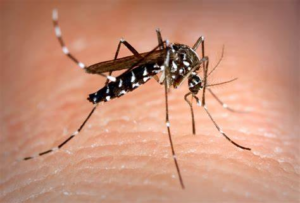20 signs your pancreas is functioning badly
4 min read
This pear-shaped organ may be small—it weighs around 80 grams (three ounces)—but it is mighty when it comes to keeping us healthy. Located in the upper abdomen, the pancreas produces important digestive enzymes and secretes hormones that are vital for metabolizing sugar. No wonder so much can go wrong when your pancreas isn’t working the way it should.
Abdominal pain
Pain in your abdomen can be a sign of pancreatitis, an acute or chronic inflammation of the pancreas. When large tumours press against nearby organs, abdominal pain can also be a symptom of pancreatic cancer, which is characterized by abnormal cell growth in the pancreas.

Back pain
Pain in your back is also associated with pancreatitis and pancreatic cancer. In the case of the latter, the pain may worsen when lying down, or three to four hours after eating.
Fever
An unusually high body temperature can also be a symptom of pancreatitis, which occurs when pancreatic enzymes escape into the tissues of the pancreas, causing irritation, edema, and congestion of the blood vessels.
Nausea and vomiting
Nausea and vomiting are symptoms of both pancreatitis and pancreatic cancer, which has been linked to smoking and obesity.
High blood pressure
High blood pressure can also be a sign of pancreatitis, which is most commonly caused by excessive alcohol intake, trauma, and gallstones blocking pancreatic ducts.

Cold and moist skin
Clammy skin and a low body temperature can be signs of severe pancreatitis, which occurs when the condition causes infection, bleeding, and formation of pus in the organ, as well as necrosis of pancreatic tissue.
Jaundice
Marked by a yellowing of the eyes and skin, dark-coloured urine and light-coloured or greasy stools, jaundice becomes a symptom of pancreatic cancer when a tumour blocks the bile duct.
Changes in your stool
Blockage of the bile duct caused by pancreatic cancer can cause stools to become pale or clay-coloured; give off an odd, strong smell; or become more buoyant owing to a higher fat content.
Itchy skin
Usually accompanied by symptoms like abdominal pain or jaundice, itchy skin can be a sign of pancreatic cancers, 95 per cent of which develop from the part of the pancreas that helps digest fats and proteins by secreting enzymes.
Diarrhea and constipation
Because it prevents the nutrients in food from being absorbed properly, pancreatic cancer can cause diarrhea and constipation, especially in patients taking pain medications.
Loss of appetite and weight change
Along with abdominal pain, a loss of appetite and unintended weight loss are usually among the first symptoms of pancreatic cancer. Losing or gaining weight, meanwhile, are among the symptoms of diabetes.
Developing diabetes late in life
Diabetes can arise when pancreatic cancer impedes the organ’s ability to produce insulin, a hormone that regulates levels of sugar in the blood.
Unusual thirst
Unusual thirst is another symptom of diabetes, which comes in two types. Type 1 diabetes occurs when your immune system attacks and destroys the cells in your pancreas that make insulin. Type 2 diabetes, which is much more common, develops when not enough insulin is being made in the pancreas, and when your body isn’t able to use the insulin it makes.
Frequent urination
As with many of the symptoms on this list, frequent urination is a symptom of both Type 1 and Type 2 diabetes. Research shows that your genes or the environment may be responsible for triggering Type 1 diabetes. Type 2 diabetes is caused by obesity, ethnic background, a family history of Type 2 diabetes, and other environmental factors.
Extreme fatigue or lack of energy
When diabetes reduces the amount of insulin produced by your pancreas, or stops production entirely, the sugar in your blood isn’t able to enter the cells where it should get used for energy.
Blurred vision
Blurred vision is another symptom of diabetes. The signs and symptoms of Type 1 diabetes may suddenly appear without warning, at which point you should seek medical attention as soon as possible.
Frequent or recurring infections
Frequent or recurring infections such as gums, skin, or vaginal infections are possible signs of diabetes. But keep in mind that Type 2 diabetes may yield no symptoms at all. If you don’t have symptoms but are over the age of 40, you should get checked.
Cuts and bruises that are slow to heal
Slow-healing cuts and bruises are also signs of diabetes. The elevated blood-sugar levels caused by diabetes can damage your body’s blood vessels, which in turn can prevent your nerves and organs from functioning properly.

Tingling or numbness in the hands or feet
Nerve damage caused by diabetes can lead to tingling or numbness in the hands or feet, along with other foot problems.
Trouble getting or maintaining an erection
Erectile dysfunction is among the possible complications of diabetes, which also include heart disease and stroke, kidney disease, and eye damage.
Source: 20 signs your pancreas is functioning badly (msn.com)


